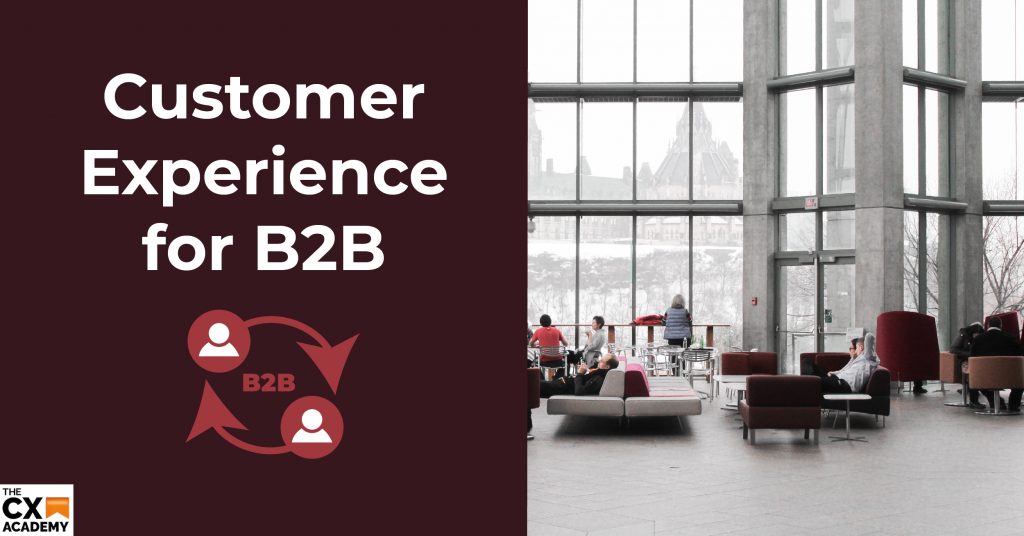
CX for B2B is very similar as for B2C relationships. In B2B, although you might be selling to another company rather than an individual consumer, you need to apply the same emotional drivers and fundamentals for both. All the key CX principles apply; customer loyalty, retention and advocacy.
What Is Business-to-Business (B2B)?
Business-to-business (B2B) is a form of transaction between businesses, such as one involving a manufacturer and wholesaler, or a wholesaler and a retailer. Business-to- business refers to business that is conducted between companies, rather than between a company and individual consumer. It is extremely important to understand this in particular in the B2B business model, where purchasers may not be the users of the products and services sold to them.
Key characteristics of Business-to-Business include:
B2B transactions tend to happen in the supply chain.
No single person is responsible for everything. In B2B, you typically deal with more people than a B2C relationship. The more people that are involved create a bigger opportunity to delight or a bigger risk of disappointing more stakeholders. Everyone you disappoint could influence a key decision maker (if they are not one themselves) increasing your risk of churn or customer leakage from a negative customer experience. So think of all your contacts as potential advocates!
B2B buyer journeys involve longer sales cycles and multiple decision makers.
Buyer journeys entail a broader range of activities and customer touch-points that stretch across different departments between and within the businesses involved. This makes the process of mapping the customer journey as well as understanding the experiences customers have along that journey far more complex and difficult to grasp.
Differences in customers.
In most B2B situations, you have customers who matter more to you than others. There are two main reasons for this. The obvious one is revenue. A typical Pareto curve means that 20% of your customers may bring 80% of your revenue. The 20% need to be treated differently from the 80%.
The second reason is that they are the pilot customer for a new product or service. You need them to be particularly happy with you, so they are willing to recommend the new product or service to others
Relationships with both positions and individuals matter and also require constant attention.
Large customer organisations are dynamic. Their structures can change, and people move from one position to another as they develop their careers. In B2B, experiences between customers and businesses can last for significant periods of time. The customer lifetime value is often greater, meaning there is more at stake. It takes time to know whether you are improving things. When selling to businesses, it takes much more time to know whether customer experience improvements are helping or hurting.
Your success matters to your customers.
Most of your customers want you to be successful. Think about the procurement people, for example. In their ideal world, they want as many companies as possible – including yours – to compete to offer products and services at the lowest possible price. Others want to see as many different innovations as possible, believing that your innovation will be to their competitive advantage. If you have already sold them something, your continued financial survival is important to their belief that you will be able to support and improve your product or service.
In B2B angry customers may stay with you.
Customer satisfaction is harder to understand when selling to companies. If the jet engine supplied by a company to be attached to the airframe manufactured by a different company suffers a failure, then the consequences are felt by the airline who has to deal with dissatisfied passengers. There is a great deal of inertia in some B2B relationships that prevents walking away from purchasing again, and so large amounts of resources are devoted to fixing the issue, and the relationship, so it never happens again.
Discerning buying patterns is more difficult in B2B.
For example, a company may purchase in large quantities to satisfy an expanding business, and that may fulfil the need for several years. Then, however, rather than simply expanding the volume with its current provider, the company starts shopping around, reconsidering other vendors to see what has changed in the marketplace since the last time the company was in the market for this type of product.
B2B buyers are behaving like consumers more than ever before. For B2B CX to be successful, the effort must be organisation wide. Sales, marketing, customer support, product management, quality assurance, and so on, must come together. Organisations need to understand the value that CX Excellence can deliver across the entire customer journey and identify specific areas where effort will drive business value.
The information in this article was extracted from an article by Jeff Sheehan, Business Model Effect on Customer Experience Management.
If you would like to learn more about CX and how to achieve CX Excellence enrol in our Professional Diploma or Certificate courses today!